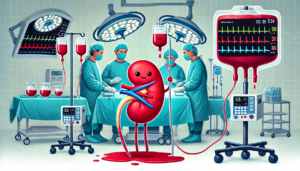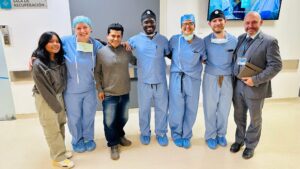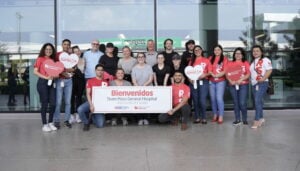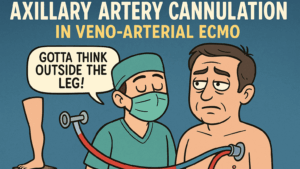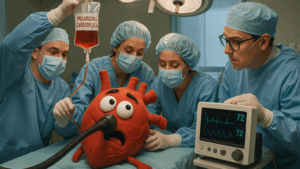Introduction and Purpose
Cardioplegia—cardiac arrest induced during surgery—is vital for myocardial protection during cardiac procedures. This study explores two commonly used single-shot cardioplegia solutions: Del Nido (DN) and Bretschneider histidine-tryptophan-ketoglutarate (HTK), assessing their efficacy in myocardial protection during prolonged ischaemia using a large animal model. While DN has its roots in pediatric surgeries, it’s gaining traction in adult cardiac procedures. The need for a head-to-head comparison, especially under standardized and prolonged ischaemic conditions, prompted this porcine model investigation.
Methodology
Eighteen Landrace pigs were randomized into DN (n=9) and HTK (n=9) groups. Following 90 minutes of cardiac arrest and 120 minutes of reperfusion, myocardial function was measured using pressure-volume loops, while histological and serological analyses were conducted to evaluate myocardial injury, oxidative stress, endothelial function, and apoptosis markers.
DN was administered with a modified base due to local regulations, using Jonosteril Free Flex as the carrier, in contrast to HTK’s crystalloid composition. Measurements included hemodynamic parameters, blood electrolyte levels, mitochondrial integrity, and markers like troponin I, CK-MB, ICAM-1, and nitrotyrosine.
Key Findings
Cardiac Function:
DN showed better left ventricular (LV) systolic and diastolic performance post-reperfusion, as indicated by improved pressure-volume metrics (VPes100 and VPed10), under both norepinephrine dosages. Also, spontaneous return to sinus rhythm was significantly higher in DN (55.6%) vs. HTK (0%).
Haemodilution and Electrolyte Balance:
Haemoglobin decreased less in the DN group post-cardioplegia application. DN also preserved sodium and chloride levels better than HTK, which exhibited significant electrolyte depletion. This likely contributed to the higher arrhythmia incidence and worse myocardial performance seen with HTK.
Myocardial Injury:
Both groups showed no significant difference in biomarkers like troponin I and CK-MB, suggesting comparable myocardial cellular injury. Histologically, myocardial tissue displayed similar levels of oedema, cell infiltration, and preservation of cellular structures.
Oxidative and Nitrosative Stress:
Markers like HIF-1α and nitrotyrosine did not differ significantly between groups, nor did mitochondrial membrane integrity assessed via JC-1 dye staining. This suggests both solutions offered similar protection against oxidative damage.
Endothelial Function:
However, endothelial cell injury markers favored DN. ICAM-1 expression was significantly lower in DN-treated animals (3.3% vs. 11.8% in HTK), indicating reduced inflammation and endothelial dysfunction—a critical factor for post-operative vascular recovery.
Apoptosis Markers:
No significant difference was noted in the release of apoptosis-inducing factors such as AIF or cytochrome C between DN and HTK groups.
Discussion
The results support the superiority of DN in key functional outcomes including LV performance and restoration of normal cardiac rhythm, likely due to its lidocaine content and electrolyte-preserving properties. HTK, despite its historical usage and theoretical endothelial benefits, did not demonstrate advantages in this study’s ischemic model.
DN’s advantages extend to less haemodilution, enhanced electrolyte stability, and lower incidence of arrhythmia, which cumulatively support better myocardial preservation. Additionally, DN’s cost-effectiveness (approx. €10 per dose) and increasing adoption in adult surgeries make it a compelling alternative.
Limitations
- The use of healthy pig models limits direct extrapolation to human patients with comorbidities.
- Only short-term outcomes were assessed; long-term effects remain unknown.
- The base solution for DN was modified due to regulatory constraints, though ingredient similarity was maintained.
- Troponin and CK-MB baseline variability was noted but not explained.
Conclusion
Del Nido cardioplegia demonstrated superiority over HTK in preserving cardiac function and limiting endothelial injury under prolonged ischaemia in this porcine model. While histological and biochemical injury markers did not differ significantly, DN’s better overall performance, ease of use, and economic benefit highlight its potential as a preferred cardioplegic solution in adult cardiac surgery.

